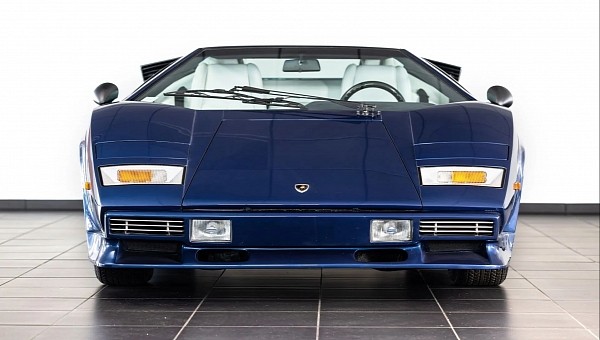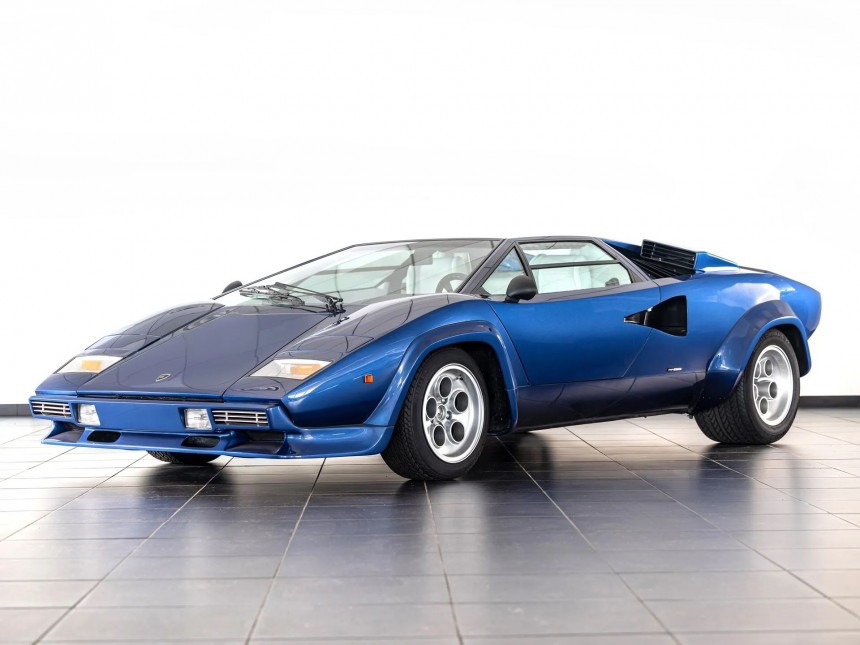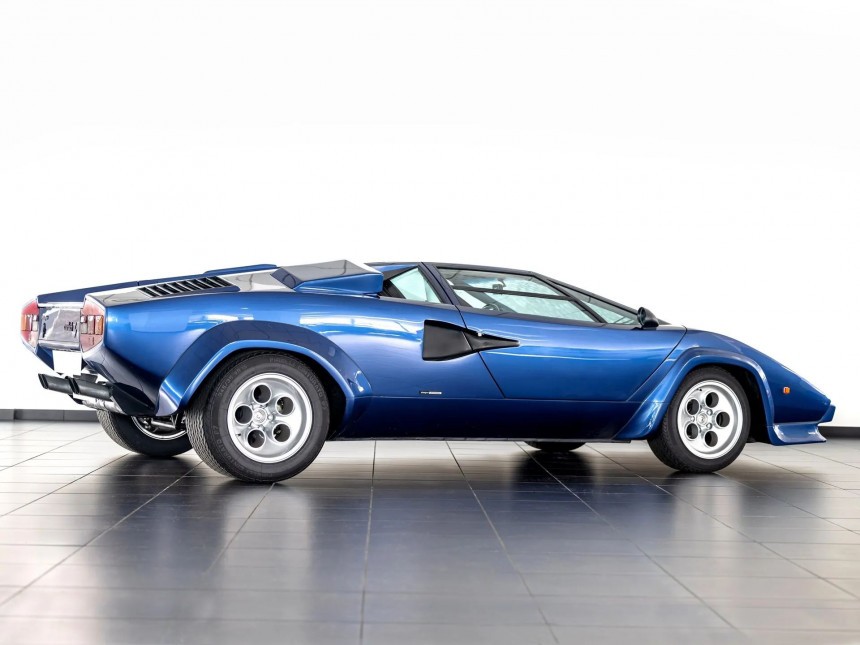Il Cavaliere started his auto-making business out of vengeance. Born in the sign of the Taurus, the one and only Ferruccio Lamborghini wanted to show Il Commendatore that he can make a better gran turismo than anything coming out of the Prancing Horse’s Maranello-based facility.
Bodied in Milan by Carrozzeria Touring, the 350 GT was revealed with great pomp and circumstance in 1964 at the Geneva Motor Show. A V12-engined artwork on wheels, the 350 GT would be discontinued in 1966 with the introduction of the slightly more powerful 400 GT. Both the 3.5- and 3.9-liter siblings use V12s developed by Giotto Bizzarrini, the man who served as chief engineer of the 250 GTO during his Ferrari tenure.
But as you’re well aware, the Raging Bull of Sant’Agata Bolognese is better known for its mad supercar designs rather than comfy grand tourers. The bite-the-back-of-your-hand beautiful Miura launched in 1966 as one of the first mid-engine production cars. As opposed to the longitudinally-mounted I4 of the 1962 Rene Bonnet Djet, the superb-looking Miura uses a transverse layout inspired by Sir Alec Issigonis’ front-engined Mini.
A little over 760 units were produced through 1973, all featuring the 3,929-cc engine introduced by the 400 GT. Three years prior to its demise, chief engineer Paolo Stanzani and his crew started working on a midship. The LP112 project also included Marcello Gandini, who came up with a very different exterior design from the Miura. Taking inspiration from the Gandini-penned 1968 Alfa Romeo Carabo, the Italian designer went for a wedge-shaped exterior that made the 1974 Countach an instant classic.
One year after Stanzani convinced Lamborghini to approve the LP112 project, his crack team of engineers and designers finished the LP500 just in time for the 1971 Geneva Motor Show. No fewer than three years were subsequently spent on refinements, which came to fruition as the LP400.
First things first, what does LP and 400 mean? LP stands for longitudinale posteriore, as in longitudinally-mounted engine behind the driver’s back. 400 divided by 100 is 4.0 liters, although Lamborghini was in the wrong. 3,929 cubic centimeters is 3.9 liters whichever way you put it, but then again, Lamborghini used this designation as a middle-finger salute to all things Ferrari. The direct rival for the Countach LP400 was the 4.4-liter 365 GT4 BB (Berlinetta Boxer), which doesn’t feature a boxer engine.
Chassis number 1120148 was a Countach LP400 that Lamborghini sent to Dallara in the spring of 1975 for some modifications. The list kicks off with Campagnolo Bravo teledial wheels, similar in design to the Bravo concept. Shod with low-profile rubber from Pirelli, the sand-cast magnesium wheels were joined by tacked-on wheel arch extensions, a matching front spoiler, and many other goodies. Canadian businessman Walter Wolf took delivery of the so-called Speciale in August 1975, a one-off commission that paved the way for the LP400 S specification.
Unveiled in 1978 at the Geneva Motor Show, the series-production version of the Speciale had been reworked by – no surprises here – Marcello Gandini. The LP400 S couldn’t have arrived at a more troubled time, though. Lamborghini filed for bankruptcy in 1978, which is why the Italian automaker spent the next two years fighting to keep the assembly line running. Brothers Jean-Claude and Patrick Mimran ultimately saved the Raging Bull. The Mimrans sold Lamborghini to Chrysler in 1987.
Due to the financial turmoil of that era, the LP400 S Series I ended production after only 50 examples of the breed were completed. Chassis number 1121028 is one of those rarefied machines, the 14th produced. It’s also believed to be the only Countach LP400 S Series I finished in Blu Notte Metallizato, which makes it all the more collectible nowadays.
1121028 still features the original engine, which is running six Weber 45 DCOE carburetors and a 10.5:1 compression ratio. It produces 375 ps (make that 370 horsepower) at 8,000 revolutions per minute, whereas peak torque is estimated to be 361 Nm (266 pound-feet) at 5,000 revolutions per minute. The only transmission available was a Lamborghini-designed fiver with a Fichtel & Sachs clutch and a limited-slip rear differential.
To be auctioned in Paris on February 1st at no reserve, this blue-painted time capsule was completed on October 26th, 1978. Specified with a Bianco white leather interior, 1121028 is also believed to be one of a handful of cars to feature SW gauges from the ultra-rare Periscopio.
Currently showing a little over 34,000 kilometers (21,127 miles) on the clock, the car was painted in a look-at-me shade of red at some point during the 20th century. It resurfaced in Munich in 2001, after which it was exported to Finland. Placed into storage until being sold at auction in 2016, chassis number 1121028 was treated to a no-expense-spared restoration in Modena, a restoration overseen by Valentino Balboni. Yes, that Balboni who served as Lamborghini’s chief test driver until 2008.
Restored to its former glory, this old-school thriller isn’t going to sell for peanuts. There is no pre-auction estimate to speak of, but we do know that 1121028 hammered for $569,520 back in 2016 when it was still red.
But as you’re well aware, the Raging Bull of Sant’Agata Bolognese is better known for its mad supercar designs rather than comfy grand tourers. The bite-the-back-of-your-hand beautiful Miura launched in 1966 as one of the first mid-engine production cars. As opposed to the longitudinally-mounted I4 of the 1962 Rene Bonnet Djet, the superb-looking Miura uses a transverse layout inspired by Sir Alec Issigonis’ front-engined Mini.
A little over 760 units were produced through 1973, all featuring the 3,929-cc engine introduced by the 400 GT. Three years prior to its demise, chief engineer Paolo Stanzani and his crew started working on a midship. The LP112 project also included Marcello Gandini, who came up with a very different exterior design from the Miura. Taking inspiration from the Gandini-penned 1968 Alfa Romeo Carabo, the Italian designer went for a wedge-shaped exterior that made the 1974 Countach an instant classic.
One year after Stanzani convinced Lamborghini to approve the LP112 project, his crack team of engineers and designers finished the LP500 just in time for the 1971 Geneva Motor Show. No fewer than three years were subsequently spent on refinements, which came to fruition as the LP400.
Chassis number 1120148 was a Countach LP400 that Lamborghini sent to Dallara in the spring of 1975 for some modifications. The list kicks off with Campagnolo Bravo teledial wheels, similar in design to the Bravo concept. Shod with low-profile rubber from Pirelli, the sand-cast magnesium wheels were joined by tacked-on wheel arch extensions, a matching front spoiler, and many other goodies. Canadian businessman Walter Wolf took delivery of the so-called Speciale in August 1975, a one-off commission that paved the way for the LP400 S specification.
Unveiled in 1978 at the Geneva Motor Show, the series-production version of the Speciale had been reworked by – no surprises here – Marcello Gandini. The LP400 S couldn’t have arrived at a more troubled time, though. Lamborghini filed for bankruptcy in 1978, which is why the Italian automaker spent the next two years fighting to keep the assembly line running. Brothers Jean-Claude and Patrick Mimran ultimately saved the Raging Bull. The Mimrans sold Lamborghini to Chrysler in 1987.
Due to the financial turmoil of that era, the LP400 S Series I ended production after only 50 examples of the breed were completed. Chassis number 1121028 is one of those rarefied machines, the 14th produced. It’s also believed to be the only Countach LP400 S Series I finished in Blu Notte Metallizato, which makes it all the more collectible nowadays.
To be auctioned in Paris on February 1st at no reserve, this blue-painted time capsule was completed on October 26th, 1978. Specified with a Bianco white leather interior, 1121028 is also believed to be one of a handful of cars to feature SW gauges from the ultra-rare Periscopio.
Currently showing a little over 34,000 kilometers (21,127 miles) on the clock, the car was painted in a look-at-me shade of red at some point during the 20th century. It resurfaced in Munich in 2001, after which it was exported to Finland. Placed into storage until being sold at auction in 2016, chassis number 1121028 was treated to a no-expense-spared restoration in Modena, a restoration overseen by Valentino Balboni. Yes, that Balboni who served as Lamborghini’s chief test driver until 2008.
Restored to its former glory, this old-school thriller isn’t going to sell for peanuts. There is no pre-auction estimate to speak of, but we do know that 1121028 hammered for $569,520 back in 2016 when it was still red.


































